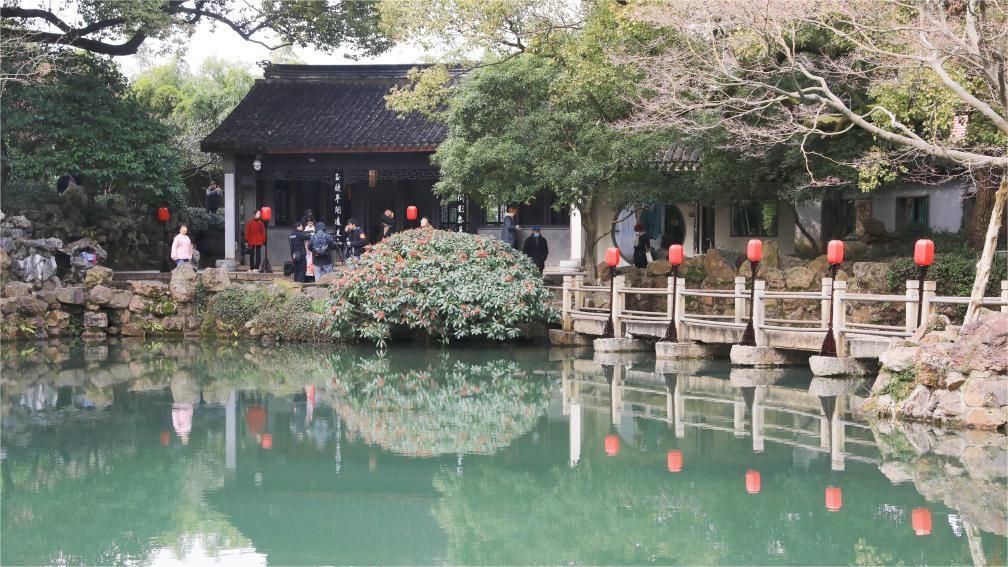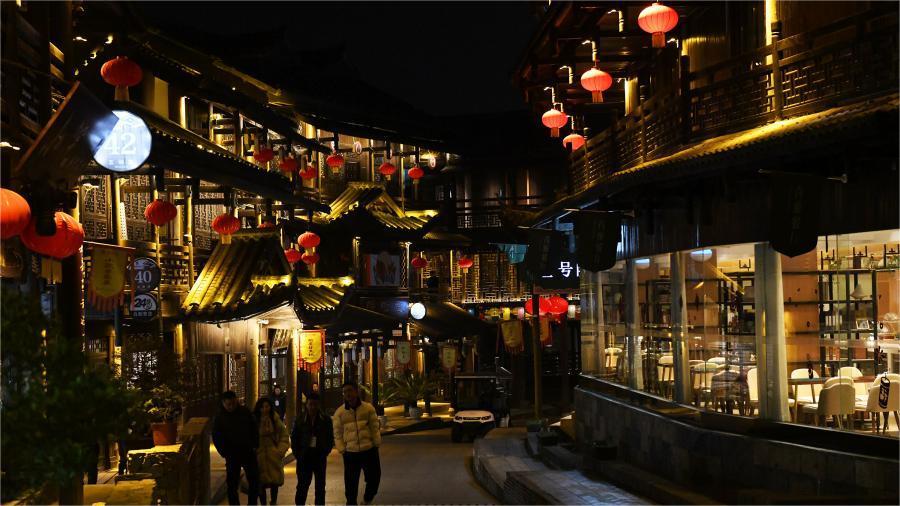Space-bred lotus boosts prosperity in Guangchang, E China's Jiangxi
A variety of white lotus, first cultivated in space and originating from Guangchang county, east China's Jiangxi Province, has brought prosperity to local residents and has spread to cover 80 percent of white lotus production areas across the country.

File photo shows a worker working at a lotus beverage workshop of Zhichun food Co., Ltd. in Guangchang county, east China's Jiangxi Province. (Photo/Zeng Henggui)
Guangchang, known for its white lotus, has a rich history of lotus cultivation dating back to the Tang Dynasty (618-907). The county has developed a specialized market for white lotus, with an average daily trading volume of approximately 50,000 kilograms. The rate of white lotus commoditization in the county has surpassed 95 percent, establishing it as the national hub for the distribution and pricing of white lotus.
Nowadays, Guangchang's white lotus has been promoted nationwide, covering an area of 20 million mu (1.33 million hectares). Furthermore, the county has established a white lotus industrial chain that boasts an annual comprehensive output value of more than 3 billion yuan ($417 million).
In 1994, Liu Guangliang, who was then the head of the White Lotus Research Institute in Guangchang, sought funding from the county government for space breeding experiments. Researchers sent 442 lotus seeds, selected from more than 10 varieties, into space.
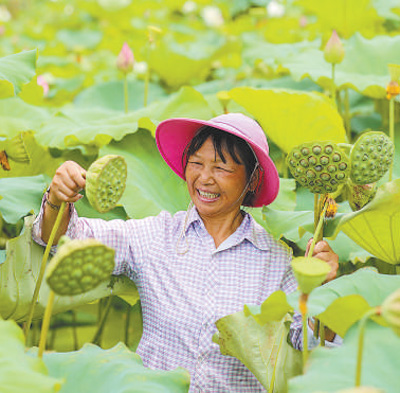
File photo shows a woman collecting lotus seedpods in Xinjian village, Jianfeng township, Guangchang county, east China's Jiangxi Province. (Photo/Zeng Henggui)
By 1999, the No. 36 space-bred lotus variety distinguished itself from traditional types. This new strain demonstrated superior characteristics in experiments, including higher yields, better quality, and a longer flowering season, with the yield per mu of lotus seeds surpassing 120 kilograms. That same year, the county initiated experimental planting of the No. 36 space-bred lotus, establishing over 20 planting facilities.
Inspired by technicians from the White Lotus Research Institute, Xie Changjun, then-Party branch secretary of Xialan village in Xujiang township, Guangchang, began growing the space-bred lotus on 4 mu of land.
Xie recalled that the space-bred lotus flourished, with the average yield of lotus seeds per mu of farmland reaching 130 kilograms that year, creating a buzz throughout the whole township. That year, Xie's net income from cultivating the space-bred lotus reached 180,000 yuan.

File photo shows blooming lotus flowers in Guangchang county, east China's Jiangxi Province. (Photo/Xie Changjian)
Under the guidance of the White Lotus Research Institute, Xie then led local residents to grow the space-bred lotus. In just a few years, the planting area of the space-bred lotus in Guangchang expanded to over 100,000 mu.
In 2006, the No. 36 space-bred lotus was introduced to lotus seed production areas nationwide, making Guangchang the largest supplier of space-bred lotus seedlings in the country.
Currently, the No. 36 space-bred lotus is cultivated across the country, covering an area of more than 20 million mu, according to Jie Zhihui, director of the White Lotus Industry Development Center in Guangchang.
The county produces 9,000 tonnes of white lotus seeds each year, creating an output value of 800 million yuan. Additionally, the county attracts 2.7 million tourist visits annually, with tourism revenues exceeding 700 million yuan.
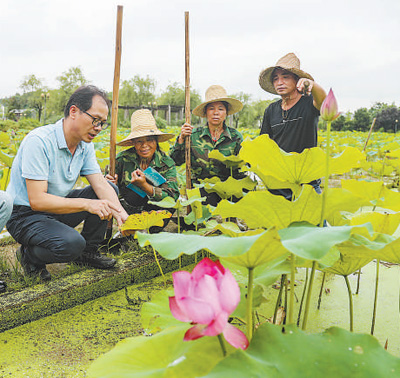
File photo shows a technician from the White Lotus Research Institute in Guangchang county, east China's Jiangxi Province, guiding lotus farmers in Xiaogang village, Xujiang township. (People's Daily/Zhu Lei)
"The space-bred lotus has become our cash cow," Xie stated. In Xialan village alone, more than 240 out of 502 households cultivate lotus, with the average annual income per person surpassing 12,000 yuan.
Today, Guangchang hosts several manufacturers specializing in automatic processing machinery for the lotus industry, more than 20 enterprises processing white lotus products, and over 130 white lotus cooperatives.
"The protein content of space-bred lotus seeds is higher than that of regular lotus seeds, making them excellent raw materials for food production, particularly for beverages," stated Chen Ronghua, president of Zhichun Food Co., Ltd.
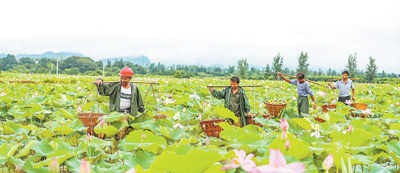
File photo shows lotus farmers carrying lotus seedpods in Guangchang county, east China's Jiangxi Province. (People's Daily/Zhu Lei)
Wu Zisheng, Party chief of Guangchang, maintained that talent and innovation are crucial for continuously expanding production and enhancing brand development.
Leveraging the White Lotus Research Institute in Guangchang, the county established workstations in 2017 to bring in experts for collaborative research projects, stated Deng Ying, secretary of the leading Party members group of the Guangchang Association for Science and Technology.
Two years later, Guangchang launched a "science and technology backyard" project focused on the white lotus, according to Deng. Furthermore, in 2023, the county established a strategic alliance for technological innovation in the white lotus industry.
Photos
Related Stories
- Blooming prosperity brightens lotus village
- Twin lotus flower of rare variety seen in SW China's Yunnan
- Vast tracts of lotus flowers attract visitors to township in E China's Anhui
- Yellow lotus flowers burst into bloom in S China's Guangzhou
- Farmers busy harvesting lotus roots in Liuzhou, S China's Guangxi
- Lotus flower with two receptacles found in SW China's Yunnan
Copyright © 2024 People's Daily Online. All Rights Reserved.







